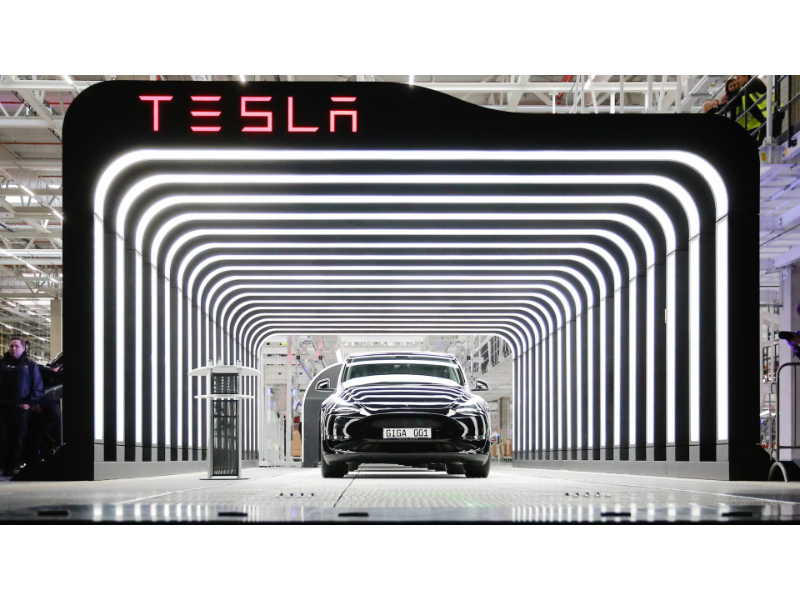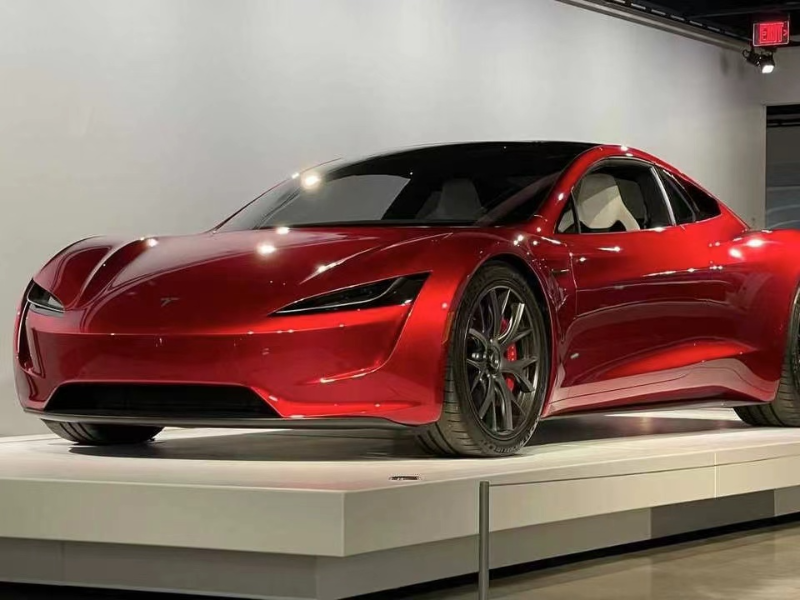- Tesla stock has experienced a significant drop in 2024, attributed to factors such as supply chain disruptions, increased competition in the EV market, and regulatory challenges.
- Challenges in the Chinese market further exacerbate Tesla’s sales performance, resulting in Tesla stock dropping.
- Despite these obstacles, investing in Tesla depends on risk tolerance and confidence in its long-term vision, emphasising the need for thorough research before making a decision.
Tesla’s stock has dropped by 32% in 2024, experiencing an over 11% drop in the past month. But why is Tesla stock dropping? Wall Street analysts have revised their Tesla target due to concerns about potential earnings risks.
Recent months have seen Tesla’s stock under pressure, raising doubts among investors about the company’s ability to meet its targets. Challenges include demand and production uncertainties, as well as competition in China. This blog explores reasons behind Tesla’s downward trend.
Also read: How did the internet start?
Also read: Should dead children be given an AI ‘afterlife’?
Where is Tesla’s stock headed?
While Tesla’s stock has declined, other tech companies like Nvidia (NVDA) and Microsoft (MSFT) have thrived. Investors wonder: Is this a buying opportunity or a sign of challenges ahead for the EV pioneer?
Tesla faces hurdles like a suspected arson attack at its European Gigafactory and increased EV competition, raising concerns about its future prospects. More details on these challenges will be discussed later.

Here are several notable recent developments:
Financial Performance and Projections: Tesla’s EBITDA margin fell from 23.55% in 2022 to 17.19% in 2023 due to various challenges, with analysts foreseeing a further decline to 15.73% in 2024. The wide variation in market consensus on Tesla’s price targets, ranging from around $23 to $320, highlights significant uncertainty regarding its future performance.
Stock Performance and Analyst Ratings: After Wells Fargo analysts downgraded Tesla to a sell rating, its stock plunged by 4.5% to below $170, with a price target of $120, resulting in Elon Musk’s net worth dropping by $4 billion to $192 billion. This substantial decline underscores the impact of analyst ratings on Tesla’s stock performance and Musk’s personal wealth.
Tesla’s Market Performance and Comparison: In 2024, Tesla became the worst-performing stock on the S&P 500, surpassing Boeing, with its stock price declining by 31% year-to-date. This significant underperformance in the market had a substantial impact on Elon Musk’s net worth. Moreover, the nullification of Musk’s record $51 billion compensation package by a judge added to Tesla’s challenges, with notable implications for both the company’s performance and Musk’s personal wealth, emphasizing the interconnectedness between Tesla’s market performance and Musk’s fortunes.
Why is Tesla stock dropping?
Tesla’s stock is falling due to several factors, including competition in the EV market, reduced Chinese sales, and Tesla’s recent performance. Here are the top 5 reasons for this decline.
1. Supply Chain Disruptions
Tesla faces significant challenges in its supply chain, primarily due to the global chip shortage. This shortage has hindered Tesla’s chip acquisition, causing delays and customer dissatisfaction. Additionally, logistical disruptions, such as port congestion and global events like the Ukraine war, have added complexity. Rising costs of crucial battery metals like lithium and cobalt have worsened the situation, impacting Tesla’s profit margins and overall profitability.
These disruptions have made vehicle transportation costly and challenging, straining Tesla’s ability to meet demand efficiently. These challenges highlight the fragility of Tesla’s operational infrastructure and emphasize the need for proactive risk management.
2. Increased Competition in the EV Market
Growing competition in the EV market is another factor contributing to Tesla’s stock decline. The EV market is undergoing a significant transformation, with traditional automakers and startups entering the industry. Established manufacturers like Ford, General Motors, and Volkswagen are investing heavily in EV technology, challenging Tesla’s dominance. Well-funded startups like Rivian and Lucid Motors are also emerging as strong competitors, leveraging innovative designs and technology.
This influx of competitors has intensified competition, potentially leading to price wars as companies vie for market share. Such competition may erode Tesla’s profit margins, forcing the company to navigate a dynamic and challenging market landscape.
3. Regulatory Challenges
Tesla faces an array of regulatory hurdles, casting uncertainties on its operations and future prospects. Safety probes into Tesla’s Autopilot system, prompted by accidents, could result in mandated upgrades, disrupting production and hampering operational efficiency.
Additionally, evolving environmental regulations concerning emissions standards and battery recycling pose extra obstacles. Adhering to these changing regulations may escalate costs, further stressing Tesla’s financial situation. Complicating matters is increased government oversight, fueled by Tesla’s dominant position in the electric vehicle (EV) market.
Antitrust investigations loom, raising concerns about regulatory scrutiny and its impact on Tesla’s market standing and future trajectory. Navigating this intricate regulatory landscape, Tesla encounters numerous challenges demanding strategic foresight and proactive measures to mitigate risks and ensure ongoing compliance.
4. Financial Performance
Another factor is Tesla’s financial performance. Scrutiny of Tesla’s financials arises due to several troubling trends. Firstly, the company’s earnings growth falls short of analysts’ expectations, prompting reassessment of its valuation and subsequent stock price declines.
Moreover, Tesla faces pressure on profit margins from rising costs linked to supply chain challenges and the looming threat of price wars amid heightened competition. These factors contribute to a less appealing investment outlook for potential investors. Additionally, concerns grow about Tesla’s ability to sustain its historically high growth rates, especially in the increasingly competitive electric vehicle (EV) market.
As rivals bolster their presence and market share, investors harbor doubts about Tesla’s ability to maintain its growth trajectory. These challenges underscore the imperative for Tesla to implement strategic measures addressing its financial performance and reassuring investors about its long-term viability.
5. The China Challenge
Tesla faces significant hurdles in the Chinese market, posing threats to its sales and growth. Electric vehicle demand in China has declined, directly impacting Tesla’s sales. Additionally, intense pricing competition from rivals like BYD exacerbates the situation.
These challenges reflect in Tesla’s sales figures, with February witnessing a substantial decline. Analysts predict a grim outlook for Tesla in China, with flat volumes in 2024 and a subsequent decline in 2025. Concerns about disappointing deliveries and the need for price cuts compound these challenges, affecting earnings estimates and casting shadows over Tesla’s future in China.
Should you invest in Tesla amid dropping stocks?
After knowing the answer of “why is Tesla stock dropping?”, deciding on investing in Tesla depends on your risk tolerance. While the declining stock may offer potential, obstacles remain. Challenges like supply chain disruptions, increased competition, and regulatory constraints could hinder growth.
If you trust Tesla’s long-term vision and its ability to overcome hurdles, this downturn could be an opportunity. Alternatively, if stability is a priority, waiting for clarity in the EV market might be wise. Conduct thorough research and assess your investment objectives before deciding.
Despite leading the EV revolution, Tesla’s stock price reflects underlying challenges. Concerns about supply chain disruptions, a competitive market, and potential regulatory obstacles cloud future prospects.
Investors reassess Tesla’s ability to maintain its position and high valuations amid these challenges. However, Tesla’s innovation and strong brand presence remain significant. The company’s trajectory depends on navigating hurdles and achieving ambitious objectives effectively.

